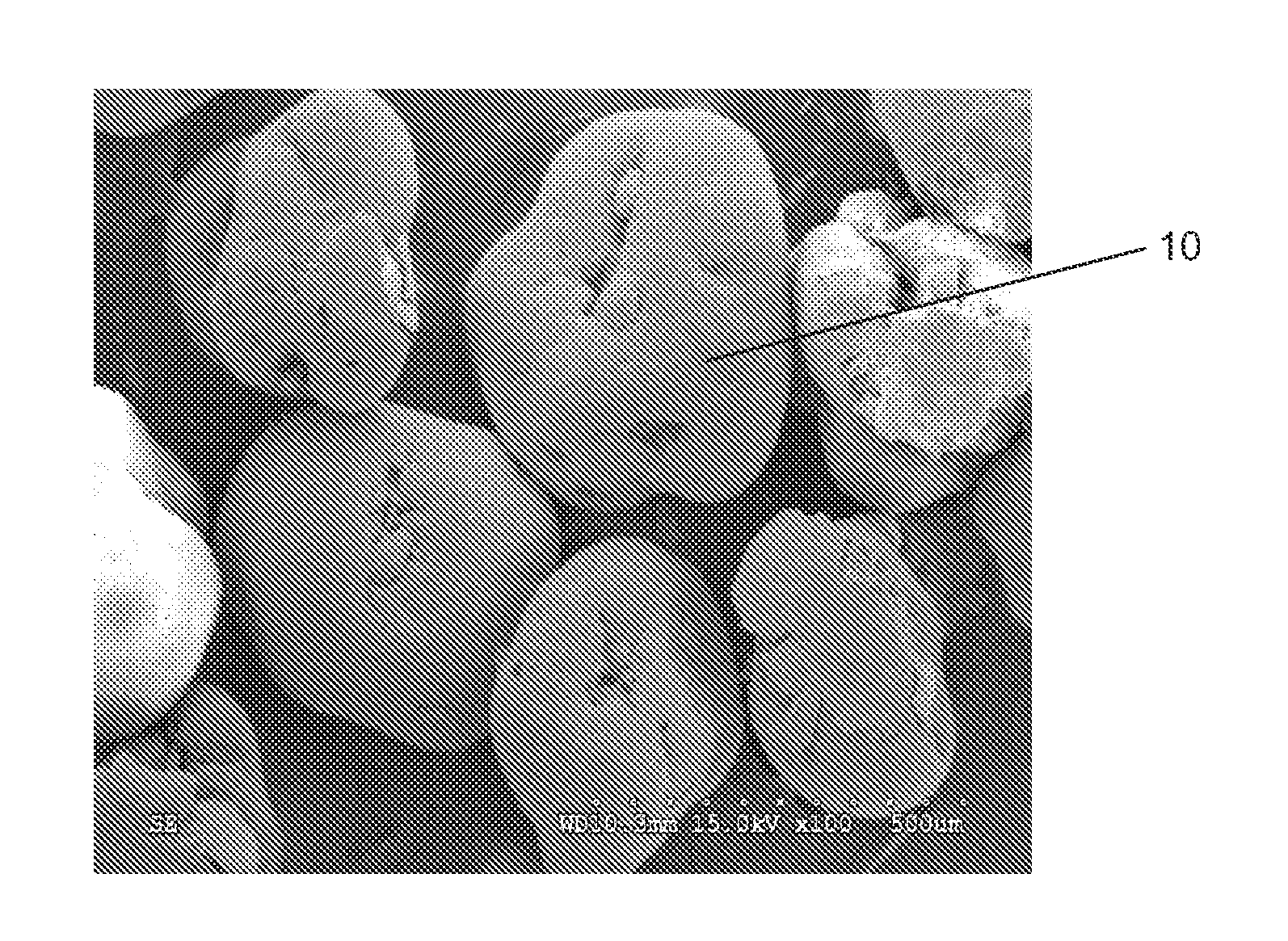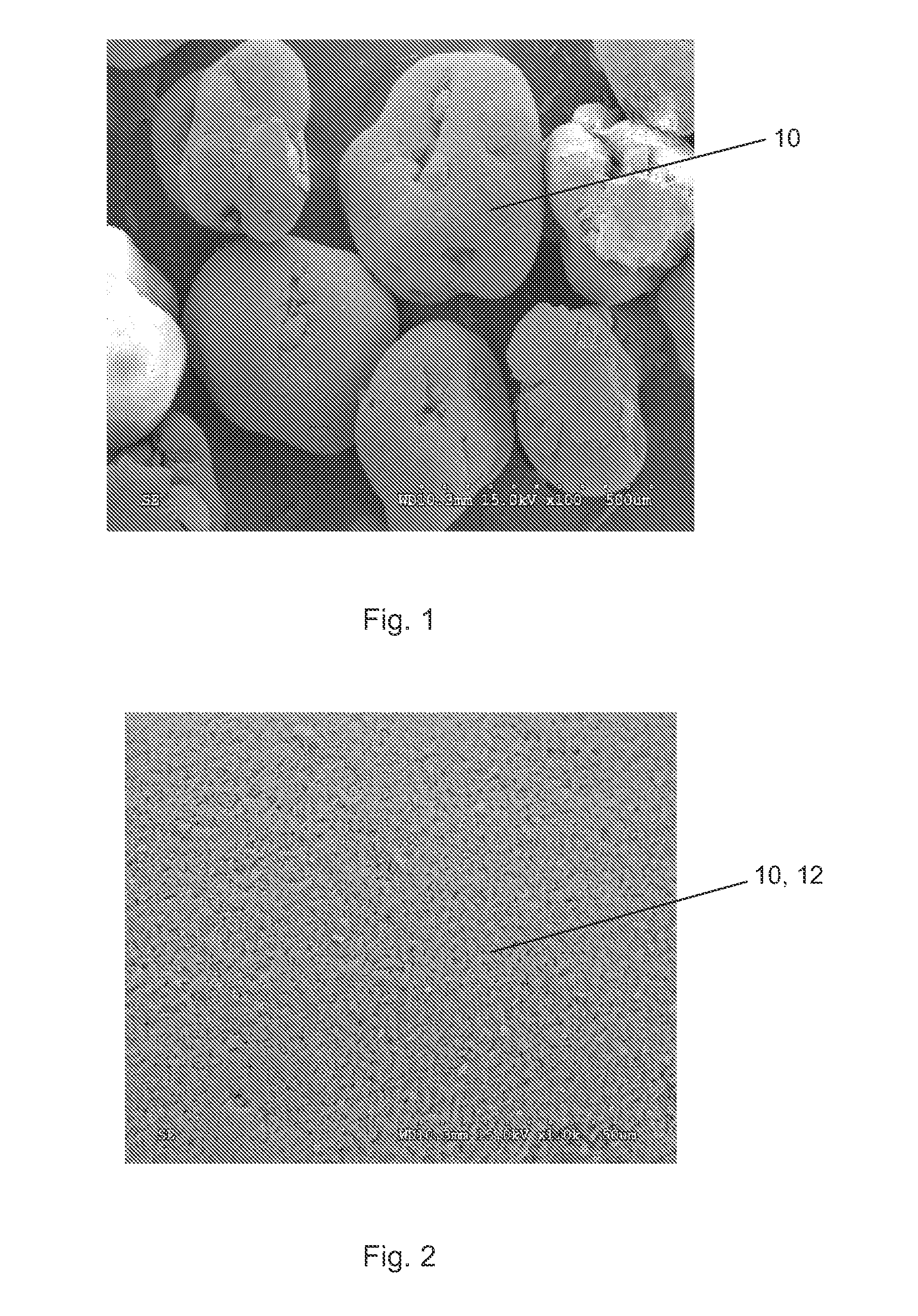Calcium sulfate composite particles including aggregated calcium sulfate nanoparticles and method of use for bone augmentation
a technology of calcium sulfate and composite particles, which is applied in the field of calcium sulfate composite particles comprising aggregated calcium sulfate nanoparticles, can solve the problems of inability to retain at the site for longer periods, material dissolution at a rapid rate, and outpacing the formation of new bone in human patients
- Summary
- Abstract
- Description
- Claims
- Application Information
AI Technical Summary
Benefits of technology
Problems solved by technology
Method used
Image
Examples
example 1
[0062]Degradation profile of the calcium sulfate composite particles of the present invention described above was determined in vitro in comparison to conventional calcium sulfate hemihydrate particles. The composite particles had a diameter in range from about 400 to about 1,000 μm. The medical grade conventional calcium sulfate hemihydrate particles tested had a diameter in a range from about 2 to about 60 μm.
[0063]The composite particles were weighed, wrapped in porous nylon mesh, weighed again. Mesh-wrapped composite particles were incubated for one hour in simulated body fluid (SBF) prepared according to the standard protocol (Kim et al, Process and Kinetics of Bonelike Apatite Formation on Sintered Hydroxyapatite in a Simulated Body Fluid, Biomaterials 2005, 26:4366-4373). After incubation, the mesh-wrapped composite particles were removed from the SBF, blot-dried, and weighed again, and this last weight was designated the index weight. The mesh-wrapped composite particles wer...
example 2
[0066]In vivo response to the bone grafting material of the present invention was evaluated in an animal study.
[0067]New Zealand white rabbits were used in this study. The rabbits were shaved and aseptically prepared for surgery. The surgical site was draped and an incision was made along the sagittal suture of the skull through both skin and periosteum, which was retracted to reveal the calvarial bone beneath. Circular defects of 11 mm in diameter were created with a hand drill and trephine bit in the parietal bones of the skull on either side of the sagittal suture line. Care was taken not to violate the sagittal suture or to interrupt the dura beneath the bone. The drilled bone was removed and the circular defects were filled using the bone grafting material of the present invention.
[0068]The bone grafting material of the present invention was a mixture of the composite particles and medical grade conventional calcium sulfate hemihydrate particles in a ratio of 65:35 (weight by w...
PUM
| Property | Measurement | Unit |
|---|---|---|
| diameter | aaaaa | aaaaa |
| diameter | aaaaa | aaaaa |
| diameter | aaaaa | aaaaa |
Abstract
Description
Claims
Application Information
 Login to View More
Login to View More - R&D
- Intellectual Property
- Life Sciences
- Materials
- Tech Scout
- Unparalleled Data Quality
- Higher Quality Content
- 60% Fewer Hallucinations
Browse by: Latest US Patents, China's latest patents, Technical Efficacy Thesaurus, Application Domain, Technology Topic, Popular Technical Reports.
© 2025 PatSnap. All rights reserved.Legal|Privacy policy|Modern Slavery Act Transparency Statement|Sitemap|About US| Contact US: help@patsnap.com



